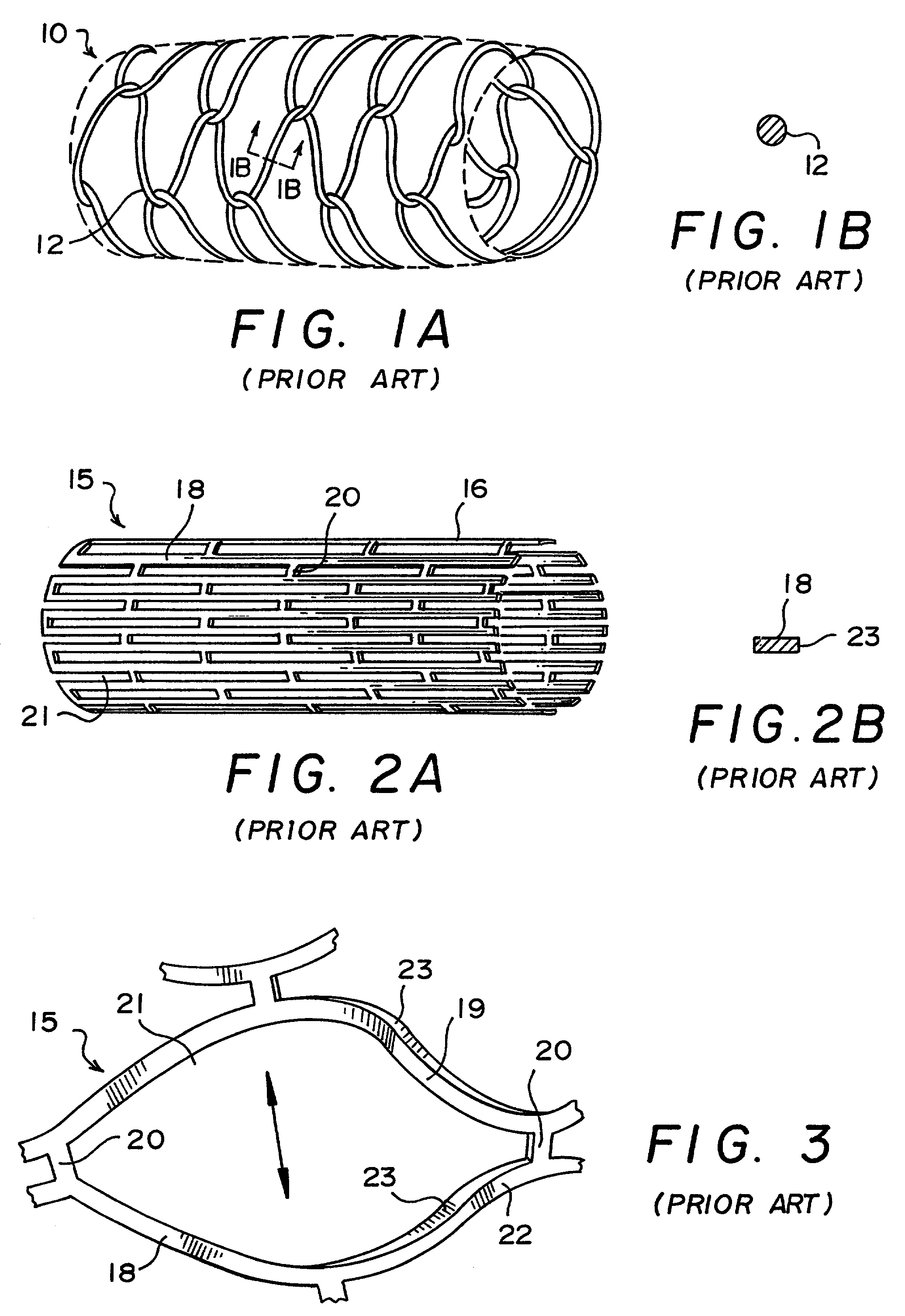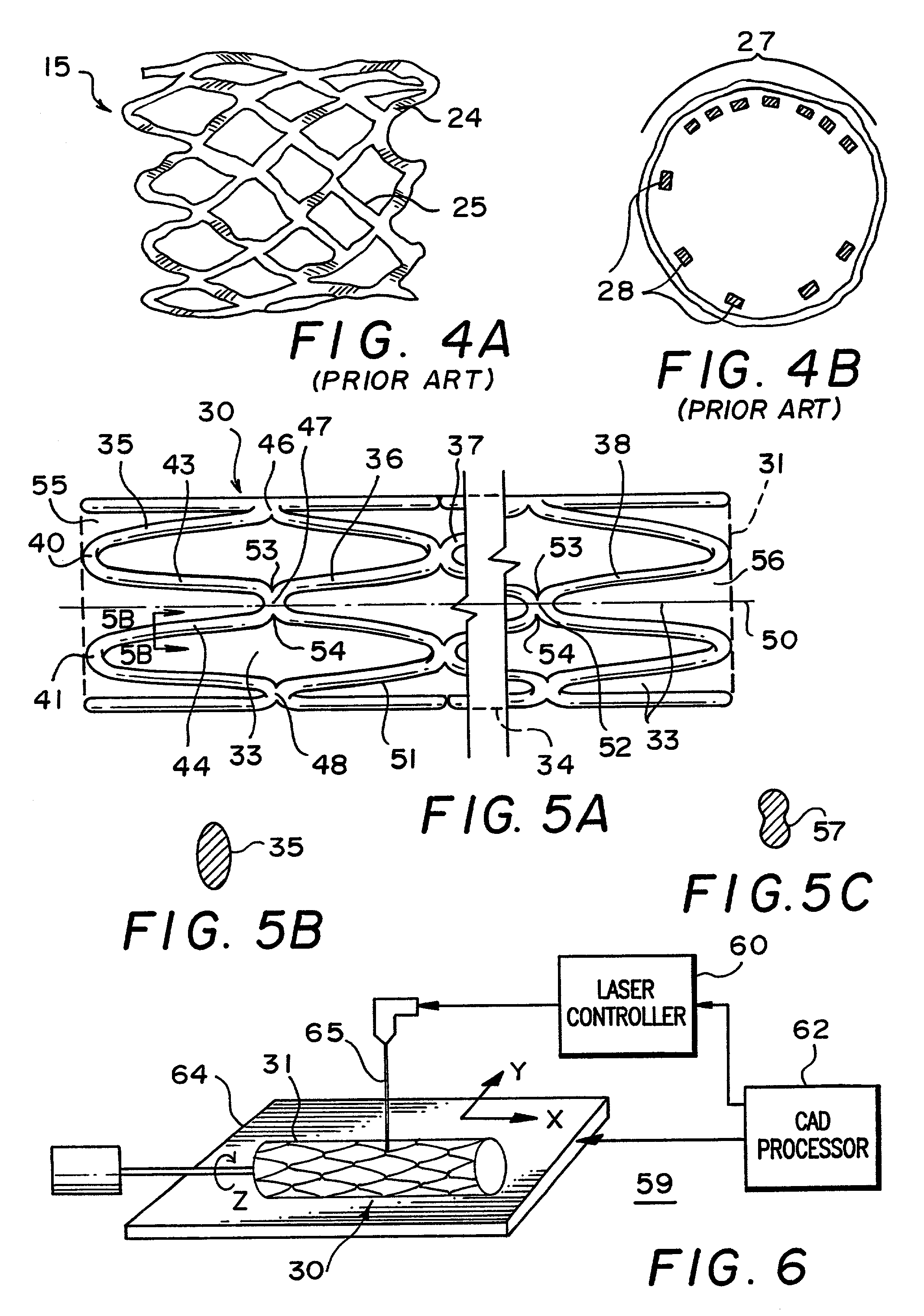Tubular stent with oval struts
a tubular stent and oval strut technology, applied in the field of stents, can solve the problems of inability to withstand elastic recoil of the vessel wall, lack of radial strength, disadvantage of presenting a greater risk of injury to the vessel wall or damage to the expansion balloon, and achieve the effect of full mechanical strength, improved stent size, and improved stent siz
- Summary
- Abstract
- Description
- Claims
- Application Information
AI Technical Summary
Benefits of technology
Problems solved by technology
Method used
Image
Examples
Embodiment Construction
[0062]Before commencing the detailed description, several comments should be made regarding the Figures of drawing. The drawings are not intended to be to scale. Where appropriate, the representations are simplified, such as in FIG. 1A, the omission of the other side of the stent which could obviously be seen in this view but would unnecessarily clutter and obscure the portion of interest, and in FIG. 2A, the detail supplied in only a part of the stent although it will be understood that the same pattern would be present throughout. In some instances, the Figure or a portion thereof is exaggerated for emphasis.
[0063]Referring to FIG. 1, a prior art wire stent 10 is illustrated in side view in part A of the Figure, and the round cross-section through an individual wire 12 of the stent is shown in part B. The wires 12 are interconnected in a zig-zag pattern similar to that of a chain-link mesh used for fences. The wire diameter is large but despite this, there is only what amounts to ...
PUM
| Property | Measurement | Unit |
|---|---|---|
| diameter | aaaaa | aaaaa |
| diameter | aaaaa | aaaaa |
| wall thickness | aaaaa | aaaaa |
Abstract
Description
Claims
Application Information
 Login to View More
Login to View More - R&D
- Intellectual Property
- Life Sciences
- Materials
- Tech Scout
- Unparalleled Data Quality
- Higher Quality Content
- 60% Fewer Hallucinations
Browse by: Latest US Patents, China's latest patents, Technical Efficacy Thesaurus, Application Domain, Technology Topic, Popular Technical Reports.
© 2025 PatSnap. All rights reserved.Legal|Privacy policy|Modern Slavery Act Transparency Statement|Sitemap|About US| Contact US: help@patsnap.com



